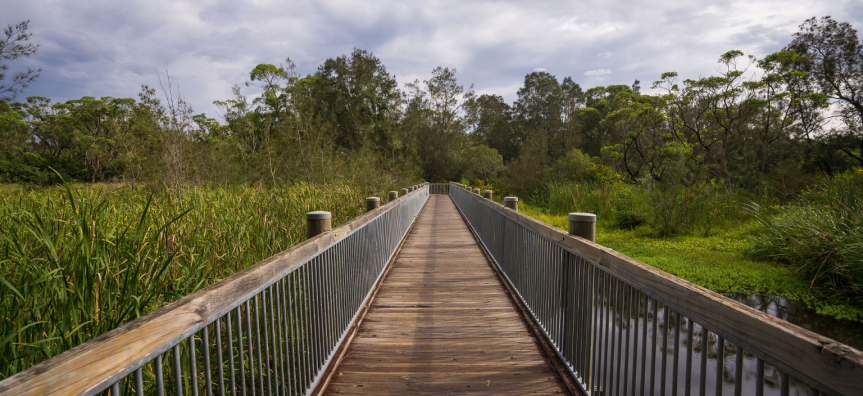
History
Walking on water
Construction of the boardwalk began in 1999, with the final section completed in 2006. The boardwalk now forms part of the 2.4km track around the wetlands. Before the boardwalk, access to the wetlands was limited and unsafe. This additional feature provides an excellent way to explore the natural beauty of the wetlands in a non-intrusive way.
Flora
Vital habitat
Reeds, sedges and grasses are important plants in these wetland habitats. Without these dense growing and deep-rooted plants, much of the mud and soil along the edges of wetlands would be eroded during times of high rainfall. They also trap polluted sediment flowing into the wetlands and help remove excess nutrients.
This type of vegetation provides a vital habitat for many animals especially birds such as ducks and swamp hens that are commonly found nesting among the dense stands of reeds.
Fauna
Macroinvertebrates - Small but mighty
Macroinvertebrates are animals without a backbone and include a diverse group such as worms, hydra, snails, spiders, mites, crustaceans, spring tails and insects.
Aquatic macroinvertebrates play an important role in maintaining a healthy ecosystem. They consume algae and other organic matter, which helps remove nutrients. They also provide a great food source for animals higher up the food chain such as frogs and birds.
Macroinvertebrates are useful indicators of the health or condition of our wetlands and other bodies of water. They respond to many kinds of pollution, including chemical pollution and physical disturbance to the landscape.
